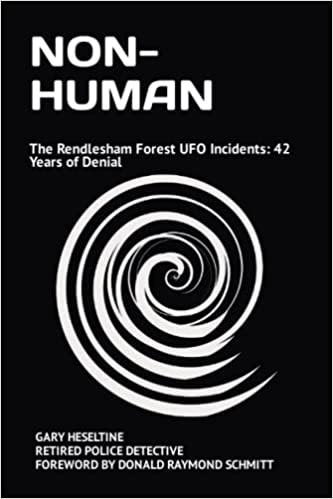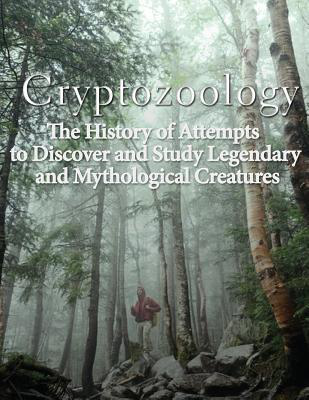I’m Right, No I’m Right - The Reality of the UFO Question
Alien Life & UFO/UAPs
Monday 20th, January 2025
5 minute read.
In recent years, discussions surrounding unidentified flying objects (UFOs) have moved from fringe conversations into mainstream discourse. The proliferation of photographs and videos purporting to show unidentified aerial phenomena (UAPs) has sparked intense debate, but it has also led to an increasingly divided community of researchers, commentators, and enthusiasts. While some hail these developments as steps towards uncovering extraterrestrial life, others remain sceptical, asserting that much of the evidence lacks the rigour needed to draw definitive conclusions.
One of the most significant challenges in UFO research is the absence of concrete evidence. While stories, hearsay, and anecdotal accounts abound, physical proof remains elusive. This has led to competing interpretations. Some suggest that the lack of evidence is part of a deliberate cover-up, while others argue it reflects a natural outcome of investigating a phenomenon that may have mundane explanations.
Recent military footage, such as videos released by the United States Department of Defense, has added credibility to claims that some UAPs exhibit capabilities beyond known human technology. For example, objects have been observed accelerating from zero to thousands of kilometres per hour in an instant or demonstrating abrupt directional changes that defy the limits of physics as we understand them. However, even these examples are not immune to scrutiny, as experts debate whether such sightings could be attributed to advanced drones, sensor malfunctions, or atmospheric anomalies.
Another layer of complexity arises from the deeply personal investment many researchers have in the subject. For some, studying UFOs has been a lifelong passion. This dedication can lead to remarkable insights, but it can also foster bias. When someone spends decades developing a theory or compiling evidence, they may become defensive when others challenge their conclusions. This defensiveness can create fractures within the UFO research community, where individuals or groups vie for recognition and validation.
Moreover, the rise of digital platforms has amplified these dynamics. Anyone with a website or social media account can now share their opinions on UFOs, regardless of expertise or evidence. While this democratisation of information can be beneficial, it also means that unverified claims can gain significant traction. Some contributors to the conversation expect their theories to be accepted without question and react with hostility when met with scepticism. This does little to advance our understanding and often distracts from the core question: what are these phenomena?
The UFO community is far from monolithic. Researchers, scientists, and enthusiasts often focus on different aspects of the phenomenon. Some prioritise investigating military encounters, while others delve into historical sightings or alleged extraterrestrial abductions. These varying approaches can lead to disagreements over methodology, interpretation, and conclusions.
For example, one group may argue that UAPs represent extraterrestrial visitors, citing the apparent technological superiority of the objects. Another may contend that these phenomena are entirely terrestrial, stemming from secret military projects or natural phenomena that are not yet understood. Both perspectives have merit, but the lack of consensus highlights the difficulty of studying a subject that straddles science, speculation, and pseudoscience.
If we are to make progress in understanding UFOs, the community must address several key challenges. First, there needs to be a commitment to rigorous, evidence-based research. Extraordinary claims require extraordinary evidence, and speculation without substantiation does little to advance the field. Governments and scientific institutions should also play a more active role in investigating UAPs, providing transparency and resources to ensure findings are robust and credible.
Second, collaboration is essential. Rather than competing for recognition or adhering rigidly to personal theories, researchers should prioritise sharing data and working across disciplines. The UFO phenomenon is inherently multidisciplinary, encompassing elements of physics, psychology, and even sociology. A holistic approach is more likely to yield meaningful insights.
Third, it is vital to recognise that simply believing you are right, regardless of which side of the debate you fall on, does not make it so. Assumptions and personal convictions must be subjected to scrutiny and validated against the available evidence. Overconfidence in unproven claims, whether sceptical or supportive, hampers progress and can distort public perception.
Finally, the public must be educated about the complexities of the subject. Simplistic narratives, whether they involve aliens or secret government projects, are appealing but often misleading. Encouraging critical thinking and scepticism, rather than blind acceptance, will lead to a more informed and constructive conversation.
The UFO phenomenon remains one of the great enigmas of our time. While much about it is shrouded in uncertainty, one thing is clear, understanding it will require an open mind, rigorous investigation, and a willingness to challenge our assumptions. Whether these objects represent extraterrestrial visitors, advanced human technology, or something else entirely, the search for answers is a journey that demands both curiosity and caution. Only through collaboration and a commitment to evidence can we hope to uncover the truth behind the mysteries in our skies.
One of the most significant challenges in UFO research is the absence of concrete evidence. While stories, hearsay, and anecdotal accounts abound, physical proof remains elusive. This has led to competing interpretations. Some suggest that the lack of evidence is part of a deliberate cover-up, while others argue it reflects a natural outcome of investigating a phenomenon that may have mundane explanations.
Recent military footage, such as videos released by the United States Department of Defense, has added credibility to claims that some UAPs exhibit capabilities beyond known human technology. For example, objects have been observed accelerating from zero to thousands of kilometres per hour in an instant or demonstrating abrupt directional changes that defy the limits of physics as we understand them. However, even these examples are not immune to scrutiny, as experts debate whether such sightings could be attributed to advanced drones, sensor malfunctions, or atmospheric anomalies.
Another layer of complexity arises from the deeply personal investment many researchers have in the subject. For some, studying UFOs has been a lifelong passion. This dedication can lead to remarkable insights, but it can also foster bias. When someone spends decades developing a theory or compiling evidence, they may become defensive when others challenge their conclusions. This defensiveness can create fractures within the UFO research community, where individuals or groups vie for recognition and validation.
Moreover, the rise of digital platforms has amplified these dynamics. Anyone with a website or social media account can now share their opinions on UFOs, regardless of expertise or evidence. While this democratisation of information can be beneficial, it also means that unverified claims can gain significant traction. Some contributors to the conversation expect their theories to be accepted without question and react with hostility when met with scepticism. This does little to advance our understanding and often distracts from the core question: what are these phenomena?
The UFO community is far from monolithic. Researchers, scientists, and enthusiasts often focus on different aspects of the phenomenon. Some prioritise investigating military encounters, while others delve into historical sightings or alleged extraterrestrial abductions. These varying approaches can lead to disagreements over methodology, interpretation, and conclusions.
For example, one group may argue that UAPs represent extraterrestrial visitors, citing the apparent technological superiority of the objects. Another may contend that these phenomena are entirely terrestrial, stemming from secret military projects or natural phenomena that are not yet understood. Both perspectives have merit, but the lack of consensus highlights the difficulty of studying a subject that straddles science, speculation, and pseudoscience.
If we are to make progress in understanding UFOs, the community must address several key challenges. First, there needs to be a commitment to rigorous, evidence-based research. Extraordinary claims require extraordinary evidence, and speculation without substantiation does little to advance the field. Governments and scientific institutions should also play a more active role in investigating UAPs, providing transparency and resources to ensure findings are robust and credible.
Second, collaboration is essential. Rather than competing for recognition or adhering rigidly to personal theories, researchers should prioritise sharing data and working across disciplines. The UFO phenomenon is inherently multidisciplinary, encompassing elements of physics, psychology, and even sociology. A holistic approach is more likely to yield meaningful insights.
Third, it is vital to recognise that simply believing you are right, regardless of which side of the debate you fall on, does not make it so. Assumptions and personal convictions must be subjected to scrutiny and validated against the available evidence. Overconfidence in unproven claims, whether sceptical or supportive, hampers progress and can distort public perception.
Finally, the public must be educated about the complexities of the subject. Simplistic narratives, whether they involve aliens or secret government projects, are appealing but often misleading. Encouraging critical thinking and scepticism, rather than blind acceptance, will lead to a more informed and constructive conversation.
The UFO phenomenon remains one of the great enigmas of our time. While much about it is shrouded in uncertainty, one thing is clear, understanding it will require an open mind, rigorous investigation, and a willingness to challenge our assumptions. Whether these objects represent extraterrestrial visitors, advanced human technology, or something else entirely, the search for answers is a journey that demands both curiosity and caution. Only through collaboration and a commitment to evidence can we hope to uncover the truth behind the mysteries in our skies.



